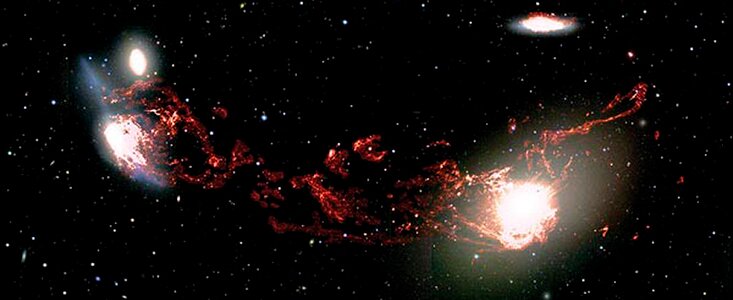noaoann08023 — Announcement
Big Galaxy Collisions Can Stunt Star Formation
7 October 2008
A deep new image of the Virgo cluster has revealed monumental tendrils of ionized hydrogen gas 400,000 light-years long connecting the elliptical galaxy M86 and the disturbed spiral galaxy NGC 4438. Taken with the wide-field Mosaic imager on the National Science Foundation’s Mayall 4-meter telescope at Kitt Peak National Observatory, this Hydrogen-alpha image and related spectroscopic measurements of the filament provide striking evidence of a previously unsuspected high-speed collision between the two galaxies, creating enough heat to slow down and even stop star formation in the galaxy.
Links
- For more, see NOAO Press Release PR-0807.

